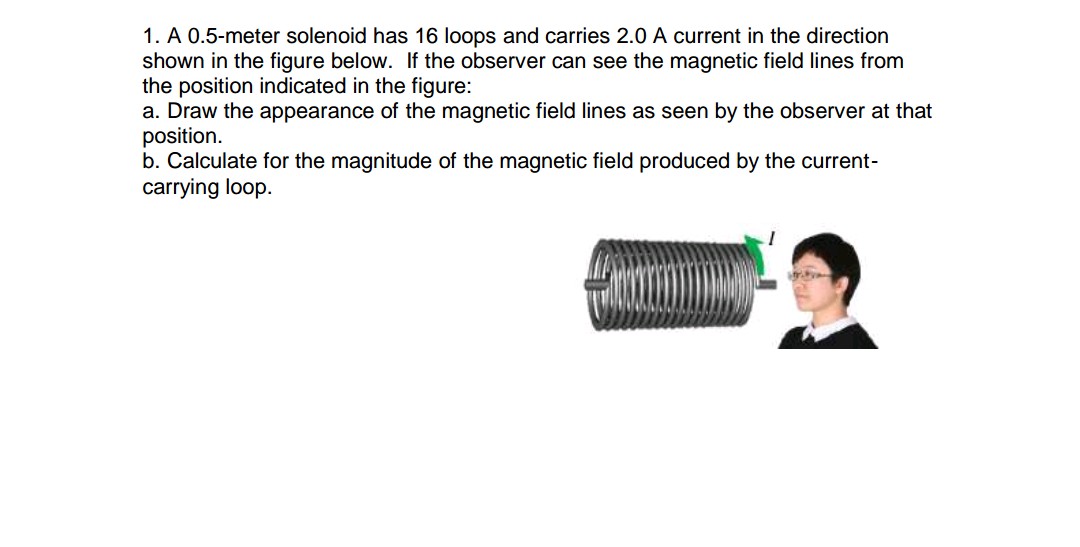A 0.5-meter solenoid has 16 loops and carries 2.0 A current in the direction shown in the figure below. If the observer can see the magnetic field lines from the position indicated in the figure: a. Draw the appearance of the magnetic field lines as seen by the observer at that position. b. Calculate for the magnitude of the magnetic field produced by the current- carrying loop.
Question

Image Transcriptionclose
1. A 0.5-meter solenoid has 16 loops and carries 2.0 A current in the direction shown in the figure below. If the observer can see the magnetic field lines from the position indicated in the figure: a. Draw the appearance of the magnetic field lines as seen by the observer at that position. b. Calculate for the magnitude of the magnetic field produced by the current- carrying loop.
The magnetic field due to a current carrying solenoid is
where, n is the number of turns per unit length, I is the current.
(a) The direction of magnetic field is given by the Maxwell's right hand rule , which is inwards from the point of observer.
(b) Number of loops, N = 16
length, L = 0.5 m
Current, I = 2 A
The magnetic field is given by